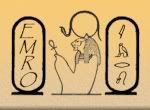One "school" advocates training and technique in the painterly tradition.
One "school" advocates experiential learning in a variety of media areas.
Why are they at odds?
Do they have to be?
I remember my first critique in graduate school. Two professors were locked like rams in an apparently age-old disagreement with HOW a student should learn how to paint--develop technique, THEN work on ideas, and the other believed students should first explore their ideas THROUGH various techniques, and this would lead to developing techniques or various techniques as each suited various content. I didn't understand it fully then, but since I have become an art instructor I believe I have a somewhat better grasp of the disagreement.
At the root of all this an artist must ask him/herself what it is he/she would like to do with his/her art. Does he/she want to be in fine art or graphic art? Does he/she want to create traditionally highly commercially viable artwork in the here and now? Or, does he/she want to explore ideas that lead to forms that stand the test of time (whether they make money or not)? There are several motivations for making art. All are perfectly fine from the hobbiest to the most serious of creators.
Why do these two philosophies have to be at odds? I personally believe that EVERY artist should learn one medium in particular as best as they can and practice it his/her whole life. That medium is drawing. This is where I stand with the technique camp. I believe that drawing is the foundation for all of the visual arts. It is a concrete physical way to explore the world around us and as we do so, we catalogue the world around us in our brain for future reference or for use in abstraction. I also believe that an informed abstract artist has vigorously drawn from life so that they come from an informed place when they abstract and the abstraction takes on a more universal quality (because of its subtle connotations). The drawing at the top of this entry is an example of what Picasso was doing at a very young age before he even attempted abstraction. He knew the tangible world inside out and this freed him to use that fluent visual vocabulary in extremely ingenius and original ways.
Do I think it's important to learn techniques in other media inside and out? Not necessarily. Do I think you should have a broad education trying all media until you find one, or two, or several to explore and develop your ideas? Absolutely. Do I think you should study in the traditional master-protege model of education in which a student tries to duplicate the instructor's vision and style? It's not for me to say--however, I do believe that if it is your goal to learn a style that you know sells well in the present, than the selling is one of your prime motivations. What remains to be seen is if copying someone else's style is creative, or even could be construed as art (but defining 'art' is an age old conundrum--and a topic for another entry). The various artists who followed the style of Caravaggio are simply referred to as Caravaggisti, which is a term that lumps them in together. It is not their names that are remembered or their style that stood the test of time, it is Caravaggio's and perhaps this reinforcement of one's style through many proteges does more for the master than for the students in terms of validation and continuance through history. BUT, if you do not care if you fit into the annals of art history--surely few end up doing so--none of all that should matter if your motivation is to create commercially viable work that appeals to a broad base of individuals in the present.
Graphic designers are in a special circumstance. They are constantly aware of having to master tools (computer/mouse/etc.) and ideas simultaneously to sell products or ideas. Their training in these two spheres run parallel. I would argue that fine art should be taught that way too. What's most important is finding out why you make art, who you want to make it for, what kind of tools that you prefer to use (which can only be found out by experimenting) and then find a master/school that suits YOUR needs. These days there are many choices. In Picasso's time, there was academic painting training and that was it. He got bored and broke out of it and changed art (and design) for all time. Sometimes stifling atmospheres create the most amazing geniuses, out of necessity.
In short, I believe art education should be a combination of training in technique fundamentals and experiences in experimentation. Basic techniques should be taught, but students should feel free to let their ideas about form and content dictate their media/style to increase their capacity as effective visual communicators.






No comments:
Post a Comment